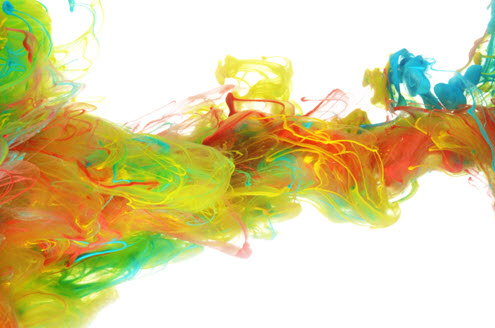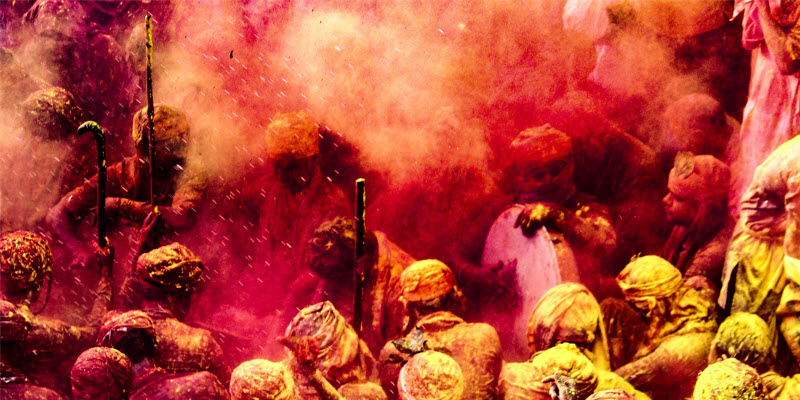How is Colour Psychology Different to Other Colour Modalities?

Karen Haller

Have you found yourself doing an internet search to find out more about colour psychology only to find conflicting information in articles, infographics and books? It seems that anything about colour has at some point be lumped under the heading of colour psychology so it’s no wonder why one of the most common questions I’m asked is “what is colour psychology exactly?”
There are quite a number of different modalities with the most commonly known being; colour healing, colour therapy, colour symbolism, personal colour preference, colour chakras and Feng Shui. So I thought I’d briefly explain them so that you’ll be able to see how different they are and that they aren’t interchangeable and, in fact, are all unique with a different focus.
So today we’re going to explore these different modalities, their origins and their uses.
Let’s start with what colour psychology is not…
colour chakras
The chakra system originated in India sometime between 1500 and 500BC and it can be found in the oldest text called the Vedas. The word chakra comes from Sanskrit meaning ‘spinning vortexes of energy’ and is rooted in Hindu spirituality.
Chakras are energy centres that are spaced out from the spine to the top of the head and each of the seven chakras has a corresponding colour that aligns with the seven colours of the rainbow being: red, orange, yellow, green, blue, indigo, and violet (or white). This modality is used a lot in yoga practice and are used as focal points for meditation within the human body.
The idea behind this modality is that when all seven chakras are balanced, energy flows freely through the body aiding us to function on an emotional, physical, and mental level.
colour healing / colour therapy
Colour healing or colour therapy is also known as chromotherapy or light therapy and this uses the visible spectrum of light to improve a person’s mood, along with their physical and mental health by shining the relevant colour light on the particular part of the body.
This method is also used to balance the body’s energy centres (chakras) by using the seven colours of the visible light spectrum with the aim to stimulate the body’s own healing process.
feng shui colour
Feng Shui is an ancient philosophy originating in China which combines Feng (wind), the air and the magnetic field of energy of the universe, with Shui (water) which represents the flow and change. It is the power of the nature.
The practice of Feng Shui arranges items in living spaces to create balance with the natural world to our benefit. The aim is to harness the energy and establish harmony between the individual and their environment to attract ‘Chi’ or positive life energy. This philosophy has become very popular in western society with several celebrity designers incorporating Feng Shui principles into their designs.
personal colour association
Colour association is largely a conscious association we have to a particular colour, even down to a particular tint, tone or shade, that relates to an event or a memory. For example, you may dislike a certain tone of green because it reminds you of your school uniform and you didn’t enjoy school. It could be you love the colour yellow because it reminds you of your VW beetle when you would go on fun holidays with your family as a child.
This is personal to you. From my experience I have found this to be the main reason why client’s loathe a colour.
colour symbolism (colour in culture)
In most cultures there will be specific colours that have a meaning which has symbolic significance within that culture and is often our human way of seeking meaning within our environment. This belief can be formed over many generations, if not hundreds of years. Often the original reason may no longer be known, slipping into folklore.
Understanding our clients’ cultural beliefs when it comes to colour decisions is important. For example, in China, white is the colour that represents death and red is the colour that symbolises good fortune, prosperity, and luck which might go some way to explain why white wine doesn’t sell well but red wine does.
A more recent cultural belief that started in western cultural is that pink is for girls and blue is for boys. There was a time when only these two colours were available and pink was seen exclusively as a girls colour leading to the belief there were gender specific colours. That’s how powerful a cultural belief can be.
colour psychology
Colour psychology goes beyond the visual experience, the pretty and the decorative. It’s the study of our subconscious responses to colour and how it influences what we think, feel and do.
Established research into theories relating to colour and psychology suggest each colour has specific effects that are universal and influence us on all levels; mental, emotional and physical.
The theory behind this is that the varying wavelengths of light from colour hit our retina and are converted into electrical impulses. These pass to the hypothalamus, which is part of the brain governing our hormones and our endocrine system, meaning when we take in colour they send subconscious messages in a language that we understand instinctively, the language of emotions.
Colour psychology helps us to understand the benefits of using colour consciously.
Colour psychology doesn’t claim to heal or be a cure for illness. But what you are able to do is intentionally create a well-balanced environment that has a positive effect on our wellbeing, whether that’s in our own homes, for patients and residents in healthcare settings, for your staff, or customers in a store.
In a nutshell, colour psychology allows greater insight into human nature and human behaviour, why we do what we do and how our environments can influence our thoughts and emotions. And when we understand that, we can use colour to create positive, life-enhancing spaces, places and outcomes consciously.
enhance your colour work
As you can see there are a lot of colour modalities, and they are all unique. The beauty is when you know the purpose and function of each, you’re able to consciously create what feels right for your clients’ specific needs and for yourself and have clarity on the results you’re seeing.
A deeper understanding of how we subconsciously respond to colour will only serve to enhance the work you already do with colour, whether you are a designer, creative, or someone who works with one of these other modalities.
Ultimately, we all want to create spaces where people will not just live in or be productive, but feel safe, connected and thrive.
And that is something colour psychology can absolutely support you to do.
If you would like to find out more about the impact colour can have in your business, download my free e-book The 10 Myths that Limit You using Colour Effectively.
And if you would like to find out how you can use the principles of colour psychology in your projects and have me working alongside you, all you need to do is send me an email to karen[at]karenhaller.co.uk to discuss further.
Yours in colour,
Karen


